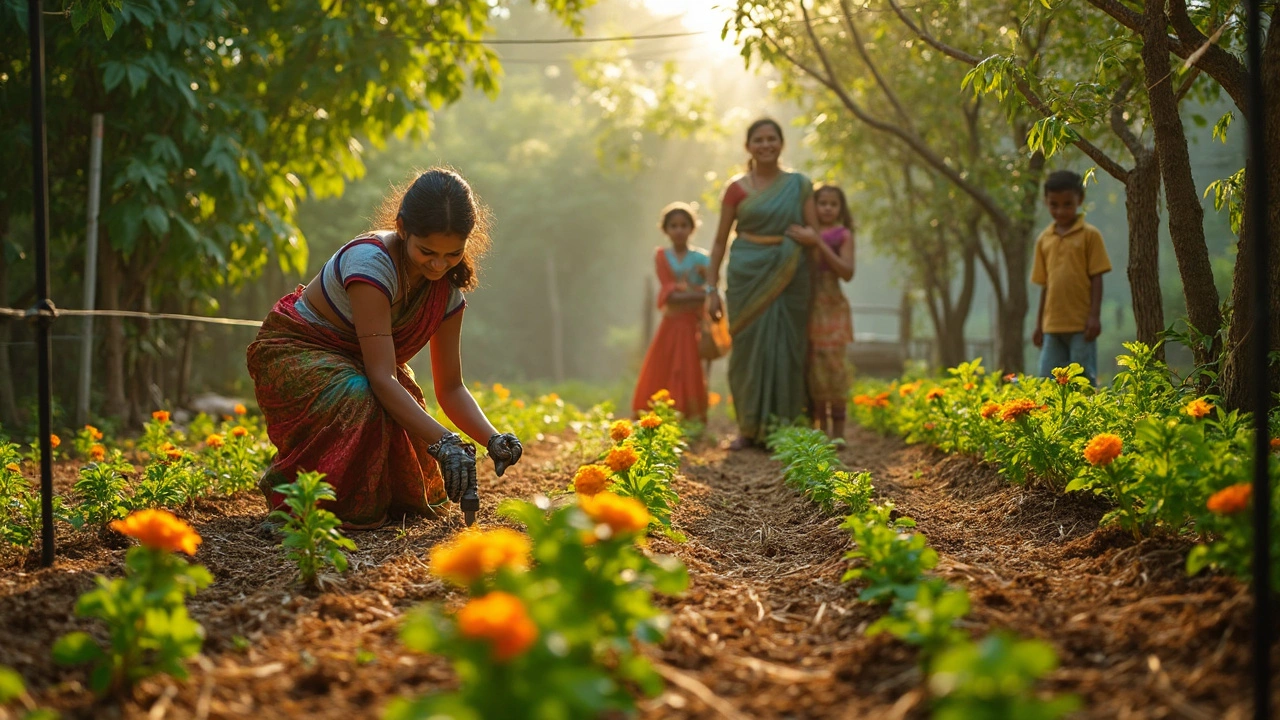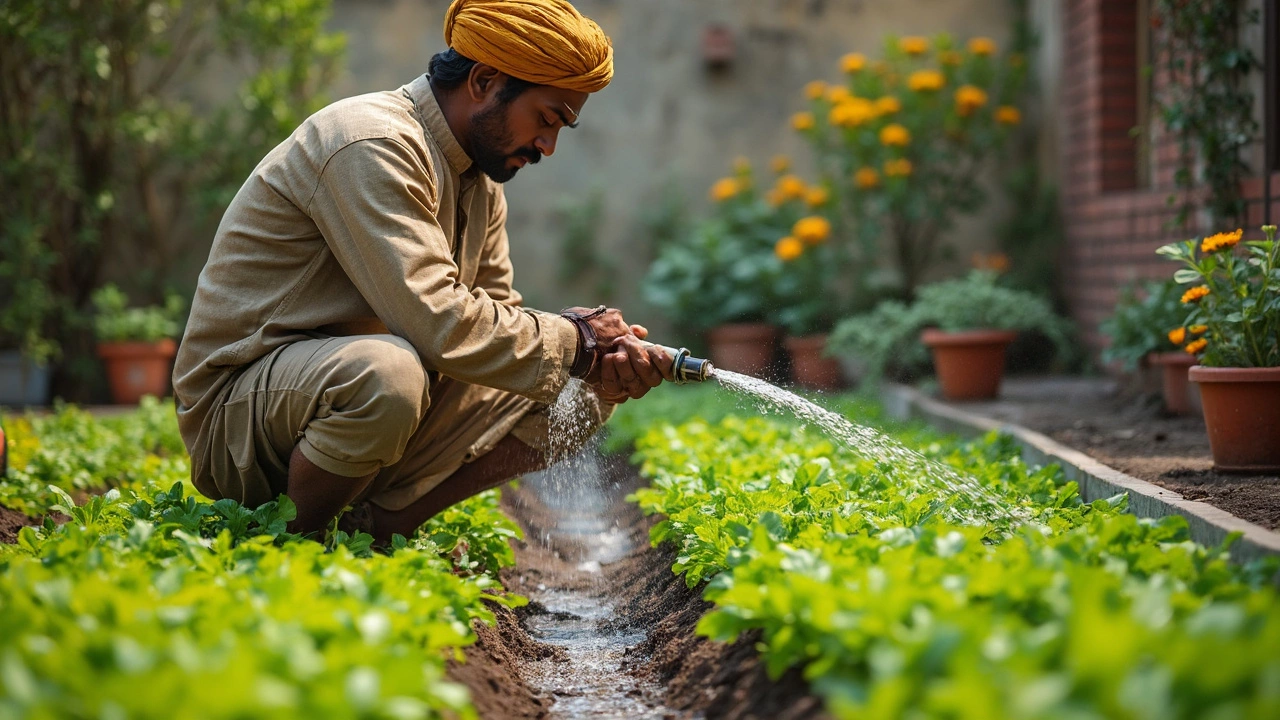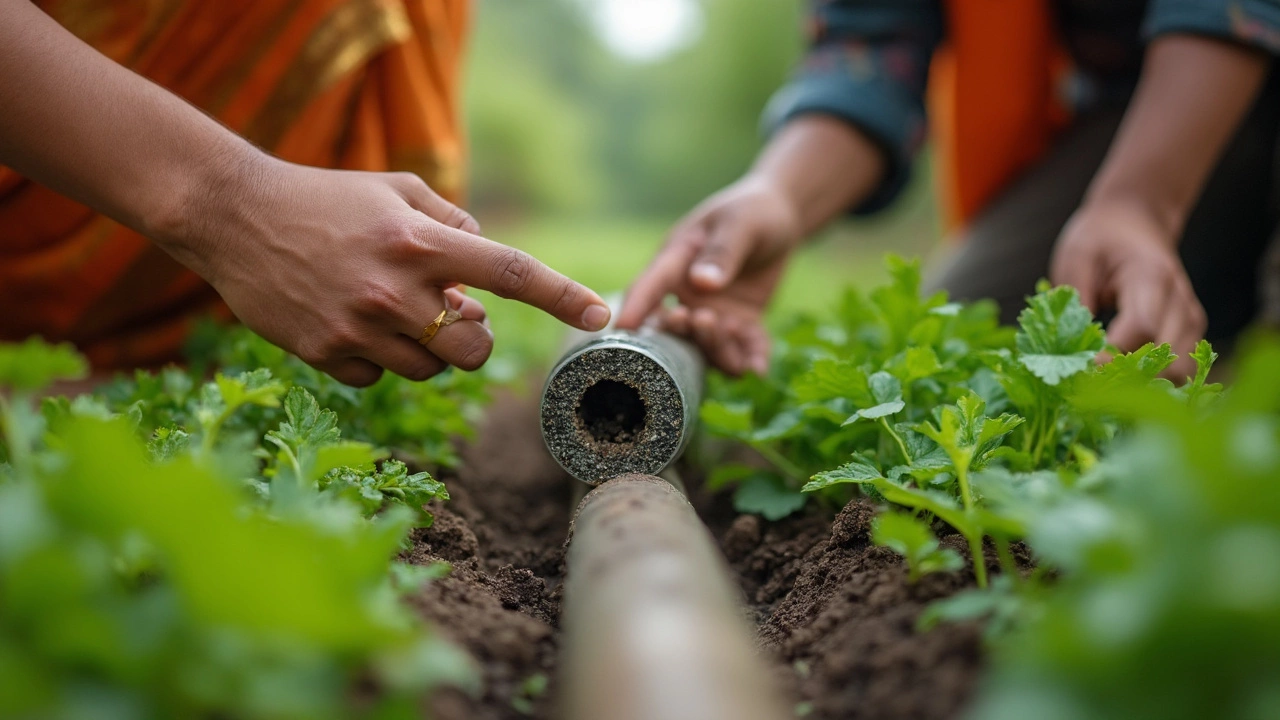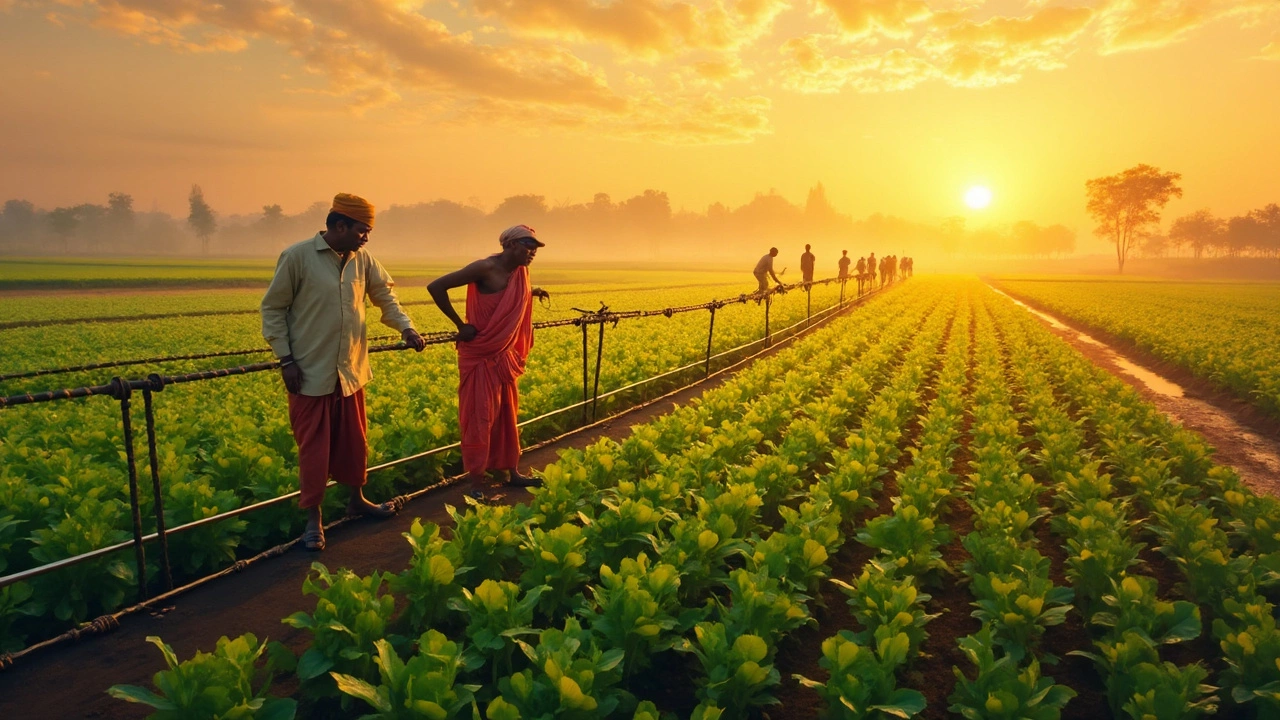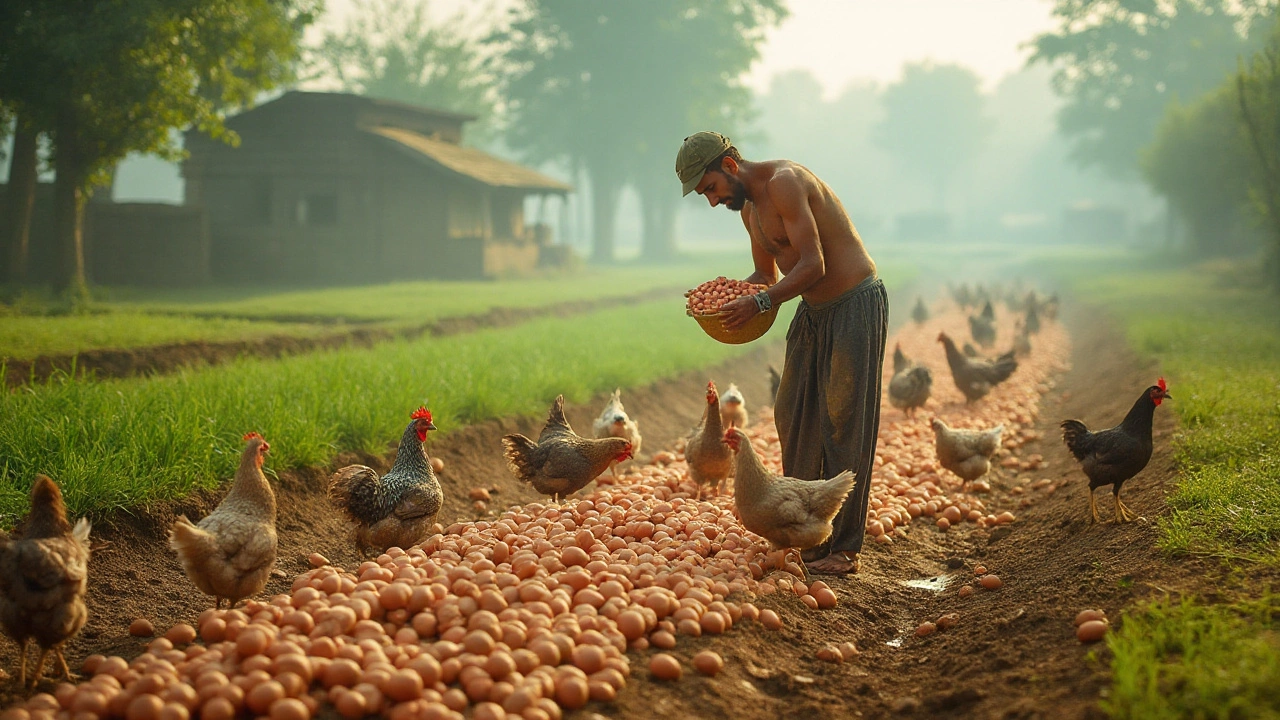Drip Irrigation: Efficient Watering for Gardens & Farms
When working with drip irrigation, a low‑volume system that delivers water straight to plant roots through tubes, emitters, or hoses. Also known as drip watering, it helps conserve water, increase yield, and reduce weed growth. This method has become a staple for Indian farmers and home gardeners who face erratic monsoons and rising water costs. By placing water exactly where the roots need it, you cut evaporation losses dramatically. That’s why you’ll see drip irrigation mentioned alongside sustainable agriculture initiatives across the country.
Key Topics Covered
One common companion to drip systems is mulch, a protective layer of organic or inorganic material spread over soil. Mulch regulates temperature, suppresses weeds, and slows surface evaporation, which can amplify the water‑saving benefits of drip irrigation. However, placing emitters under thick mulch can create air pockets or block flow if not installed correctly. Knowing how mulch interacts with drip lines helps you decide whether to combine the two for your specific climate and crop.
Another hurdle many growers face is clogging, the blockage of emitters or tubing caused by sediments, mineral deposits, or organic matter. Clogging reduces pressure, leads to uneven watering, and can ruin an entire season’s effort. The root cause often ties back to water quality, filter maintenance, and the type of fertilizer used. Understanding that “clogging influences drip irrigation performance” lets you set up preventive filters and schedule regular checks.
Lastly, water loss, the percentage of water that never reaches the plant root zone due to leaks, evaporation, or system inefficiencies, is a metric every practitioner watches. Studies from Indian agricultural research stations show that well‑designed drip systems can keep loss under 10 %, compared to 30 % or more for flood irrigation. Reducing water loss requires proper line pressure, correct emitter spacing, and periodic flushing to clear debris. Flushing—cleaning the system with a high‑flow burst—prevents the buildup that leads to clogging, creating a cycle where each maintenance step supports the next.
Below you’ll find a curated set of articles that dig deeper into each of these areas: from setting up drip under mulch, to troubleshooting clogged lines, to calculating water loss for different crops. Whether you’re a backyard hobbyist or a large‑scale farmer, the guides will give you actionable steps to make your drip irrigation system work smarter, not harder.
Drip Irrigation Under Mulch: Worth It or Not?
Putting drip irrigation under mulch can be a game-changer for water conservation and plant health. This article digs into the benefits and possible issues of combining these two gardening techniques. Find out how to set up your system for the best results, learn a few tricks to avoid common mistakes, and see why some folks swear by this method. Is it right for your garden? Let’s break it down, so you can decide what works best for your space and your plants.
How Often Do You Have to Flush a Drip Irrigation System?
Flushing your drip irrigation system isn’t just about keeping the water flowing; it can actually save you a lot of headaches down the line. This article explains how often to flush your system, signs that it's time for a cleanup, and why skipping this step leads to nasty clogs. You'll get realistic tips for different climates and water qualities, plus simple steps for easier maintenance. Whether you’re running a backyard setup or a bigger grow, you’ll know what to do so your lines don’t let you down.
Drip Line Clogging: Why It Happens and How to Fix It
Clogged drip lines can turn a garden from lush to lackluster fast. This article breaks down the reasons your drip irrigation keeps getting blocked, from tiny bits of dirt to sneaky mineral buildups. Learn how water quality, neglected filters, and outside pests create headaches for gardeners. Get straight-to-the-point tips for preventing and tackling clogs. No more guessing—just clear, practical fixes so you can keep your plants happy.
Understanding Water Loss in Drip Irrigation Systems
Drip irrigation is a crucial method in agriculture for conserving water and improving crop yield. This article explores the percentage of water loss in drip irrigation systems, highlighting the factors that influence loss and offering practical tips to minimize it. Understand the system's efficiency and learn ways to optimize your watering habits. With simple adjustments, you can save more water and support sustainable farming practices.
- manufacturing
- India
- food processing
- garden tips
- rice cultivation
- government schemes
- balcony garden
- urban gardening
- balcony gardening
- profitable business
- business ideas
- plastic manufacturing
- drip irrigation
- plant care
- steel manufacturing
- sustainable gardening
- startup ideas
- steel industry
- flower gardening
- textile manufacturers

